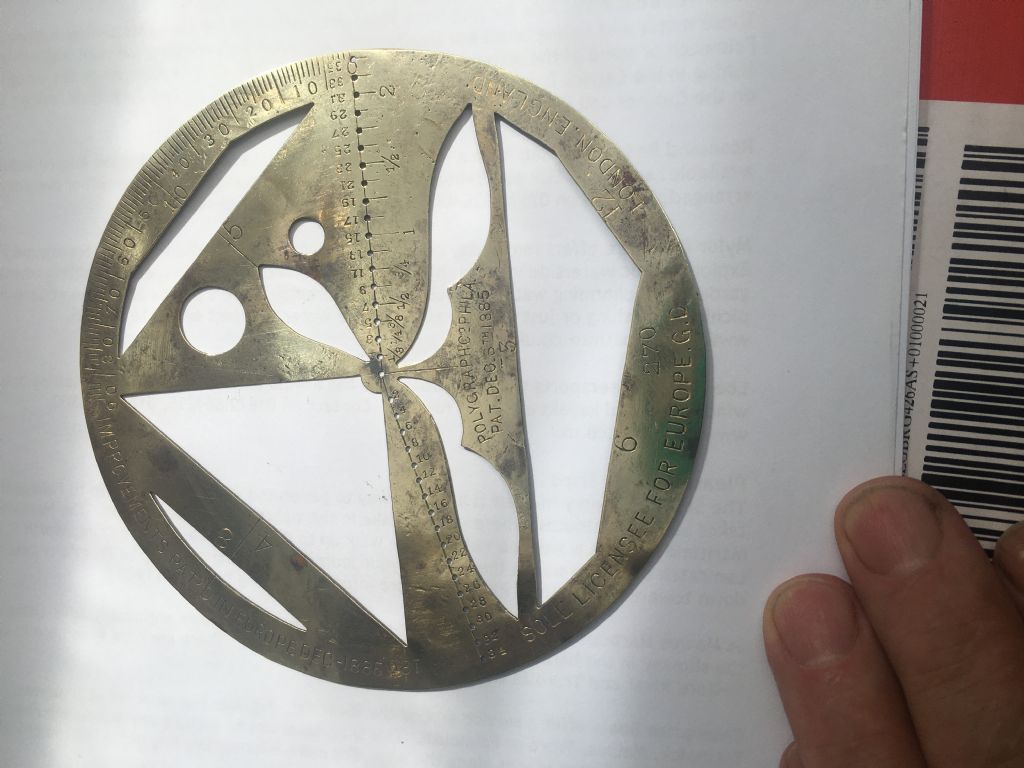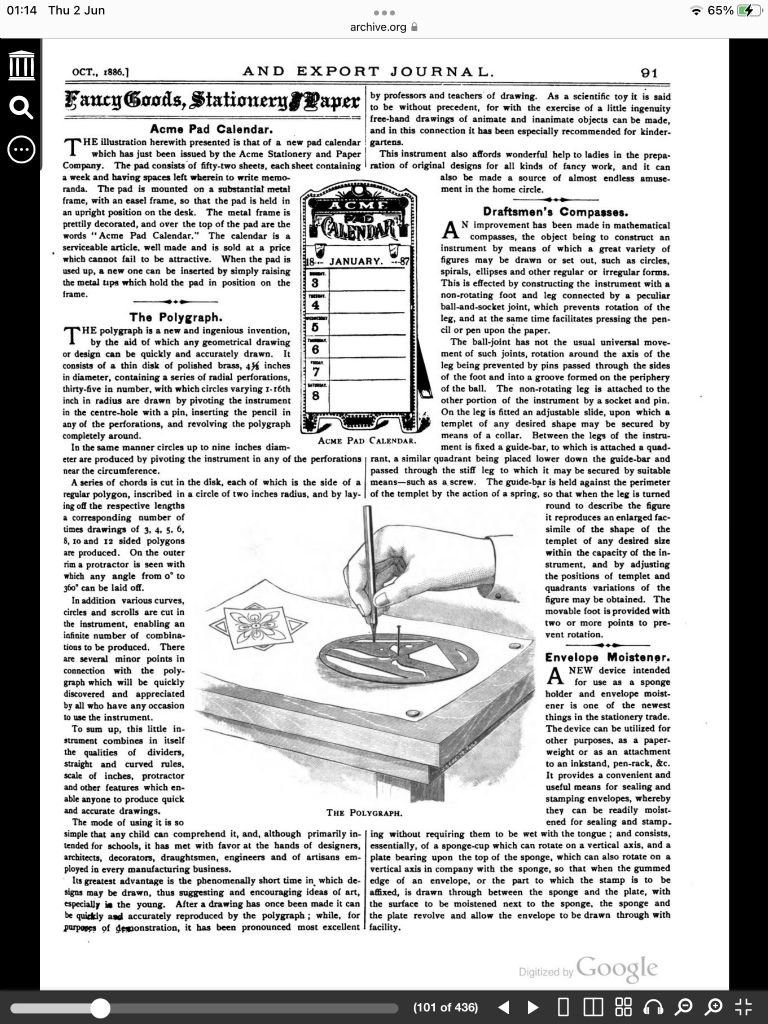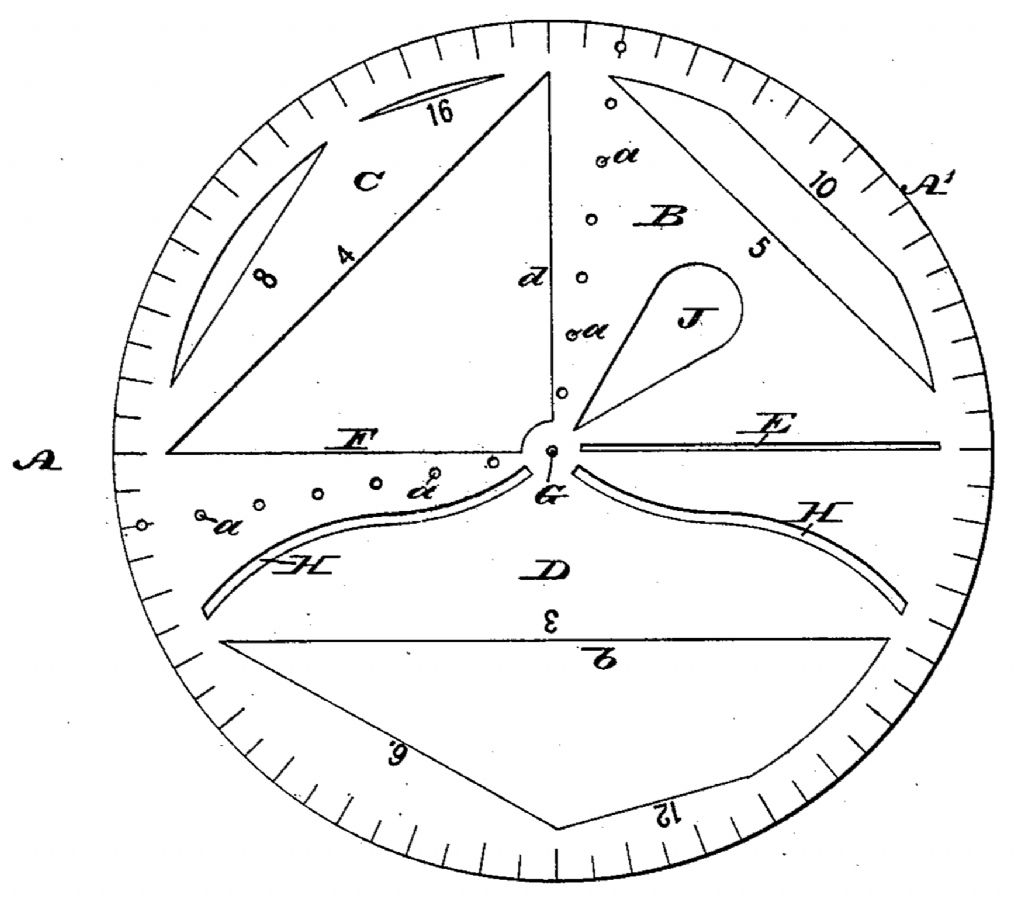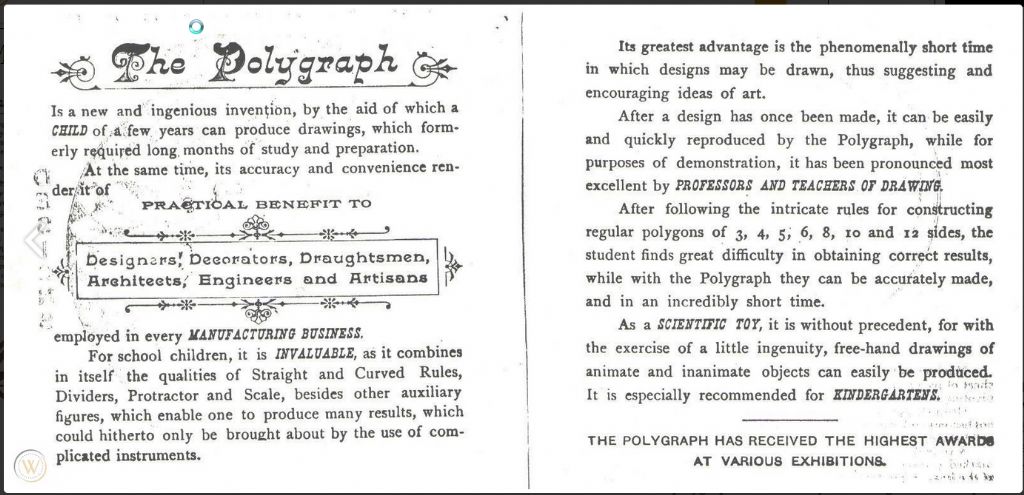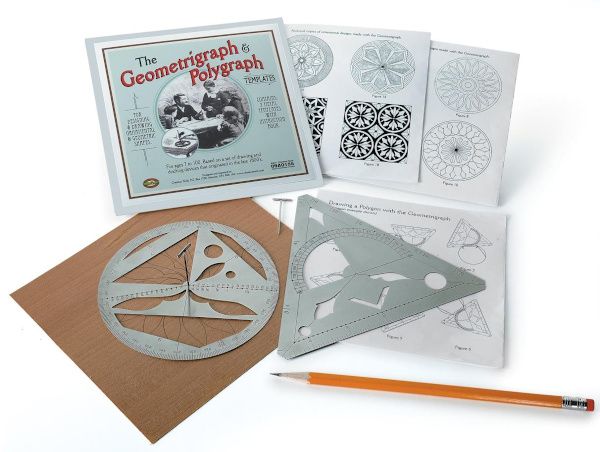You have, Mike!
It is a wonderful device – perhaps a potential fun project as a break from the intricacies of a full model-engineering project?
Those with CAD/CAM equipment might find it an interesting challenge. Without, it might lend itself to being profiled and having the lines engraved, on a jig-borer. Or indeed, a neat hand-work exercise. The degree calibrations would guide setting-out the holes. The originals were probably in sheet-brass but if still made a few decades later, no doubt it would have exploited the transparency of Celluloid.
And may yours too gain "the highest awards at various exhibitions" – though I am not sure of its category!
I've sometimes thought that perhaps in the Clocks and Scientific Instruments, and Tool-making, categories of model-engineering, some of the ingenious but long-surpassed or take-for-granted things patented in the late 19th – early 20th Centuries could be worth exploring. Some of the tooling tips in early editions of ME bear re-examining too, perhaps up-dating; but I don't go as far as how to re-cut a domestic tap seating on the lathe! (In that example, the writer only made a basic Keats angle-plate anyway.)
Paul –
I see what you mean. It is clear the makers originally intended children to use it as an educational aid to learning geometry, as well as an inspiring artistic toy. This is further amplified by the page Michael shows us, from the " … And Export Journal" that states it was aimed mainly at children – oh, and ladies – but professional designers and artists also use it. Useful too, giving some idea of how to use it.
That reference also reviews what we now know as a wall-planner or week-to-view diary. I didn't know those date back to the 1880s. Made by "Acme" , a name so often used in fun as a fictitious maker of goodness-knows-what; but any relation to the "Acme" famous for the "Acme Thunderer" referee's whistle?
Plus an "Envelope Moistener" , a more elaborate precursor of what became so familiar to many of us, on the proper bank and Post Office counter.
Whilst the accompanying "Draftsman's Compasses " – was the journal, American? – is intriguing, and the complicated description would be far clearer if accompanied by a drawing.
 Michael Gilligan.
Michael Gilligan.

